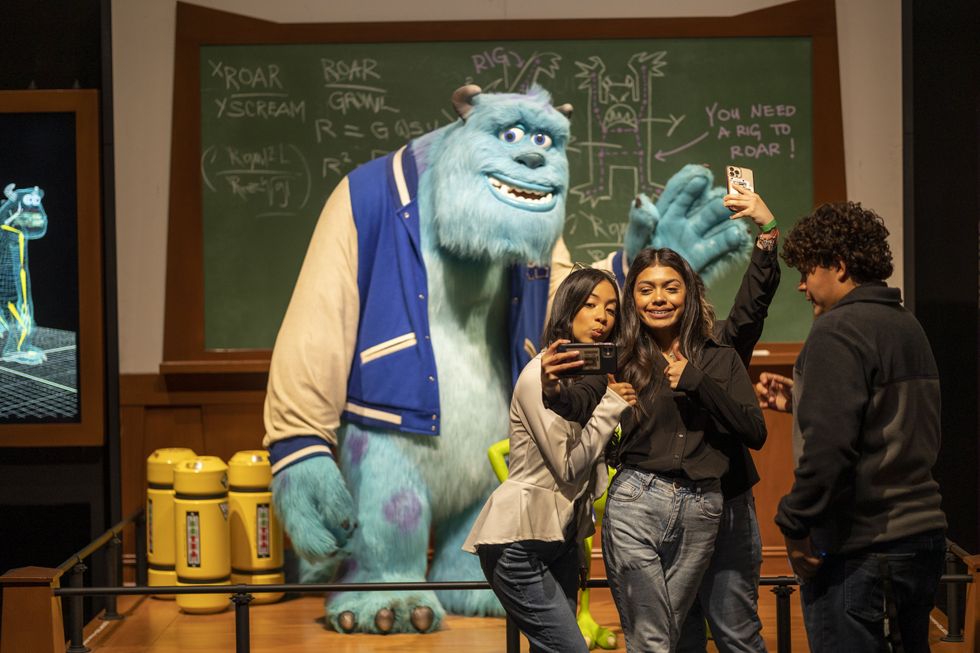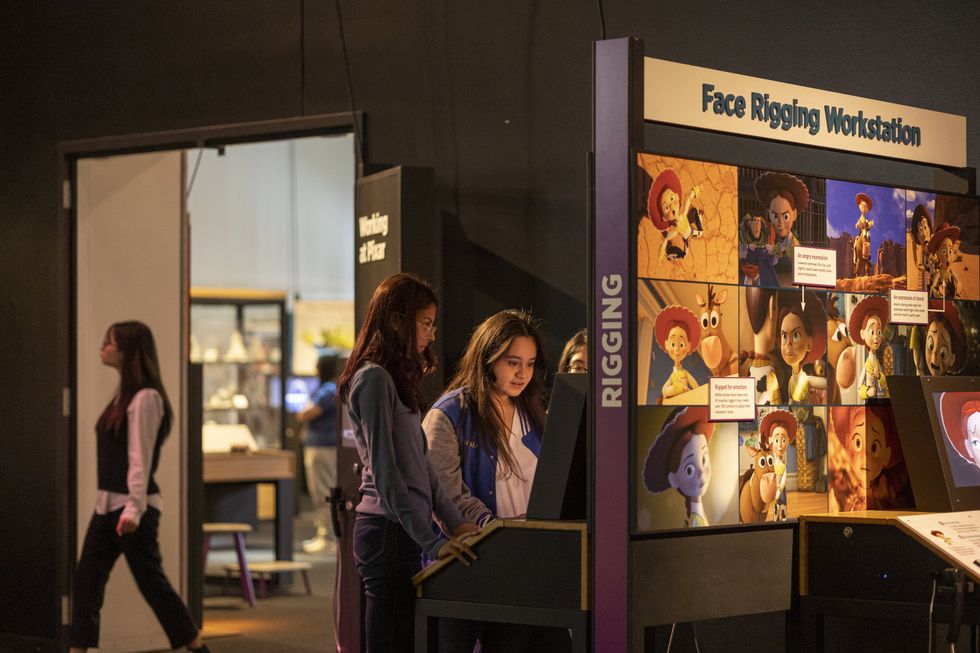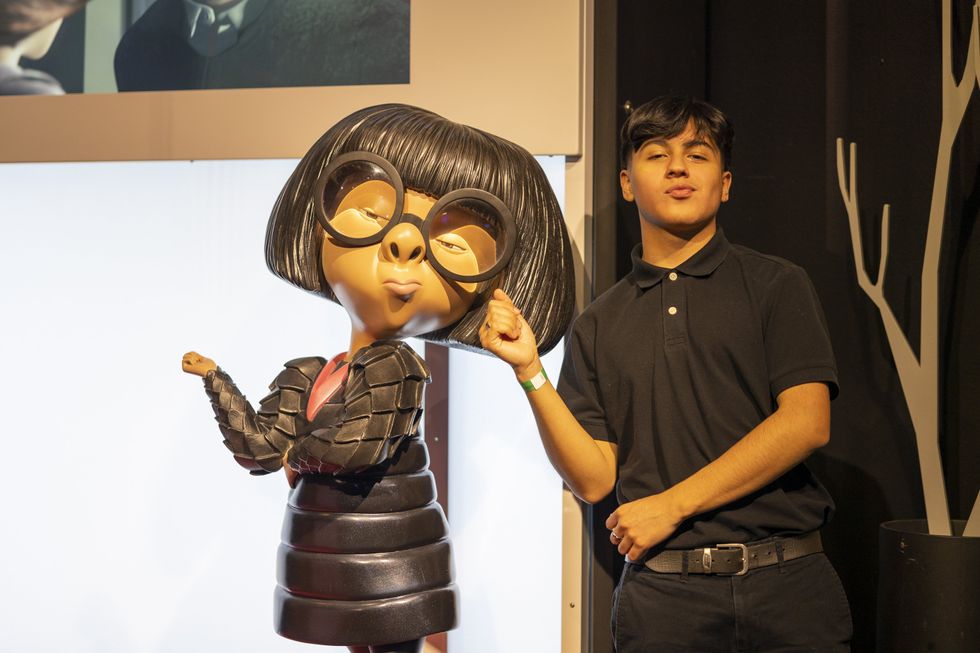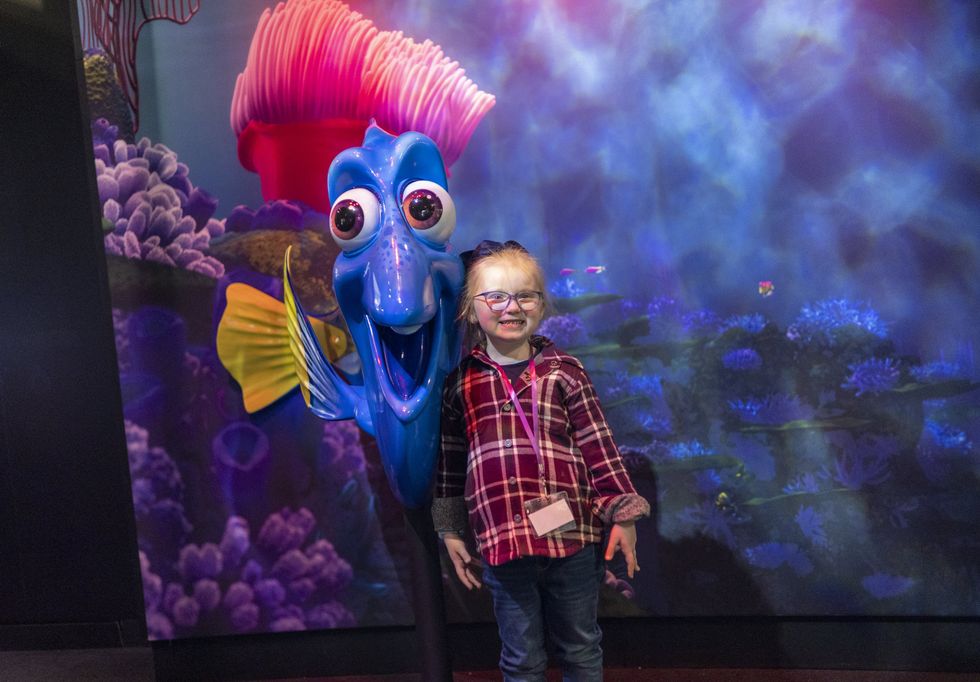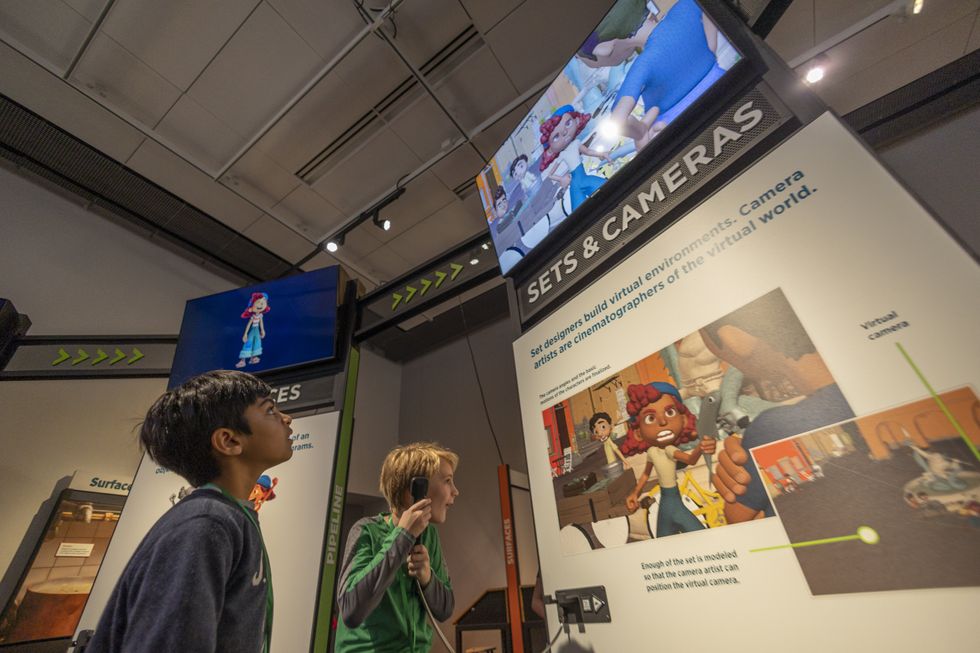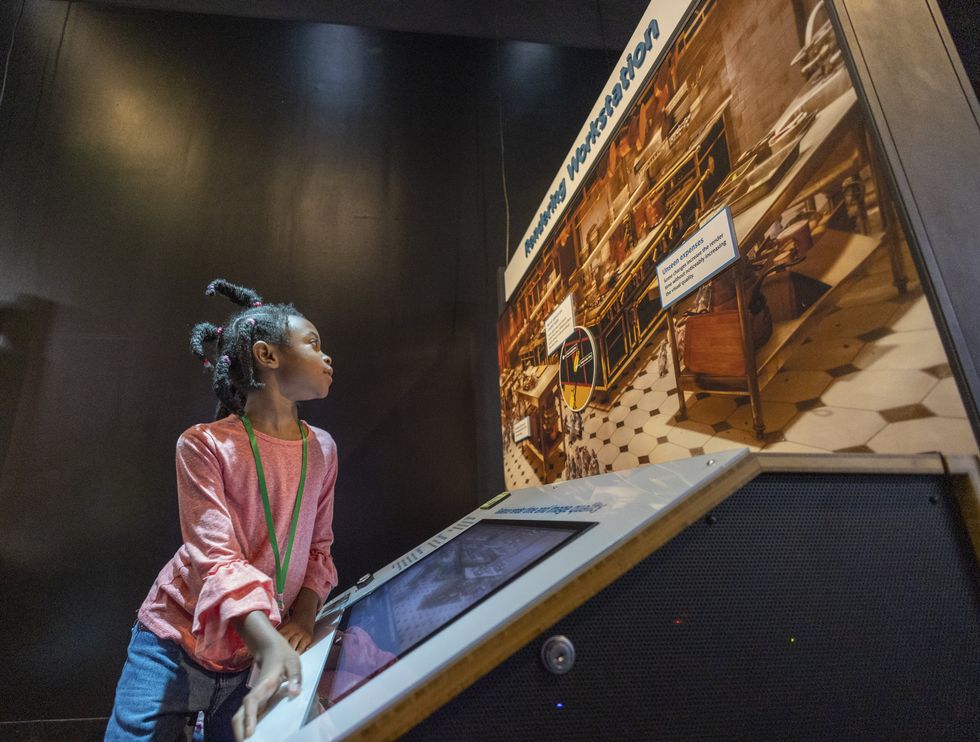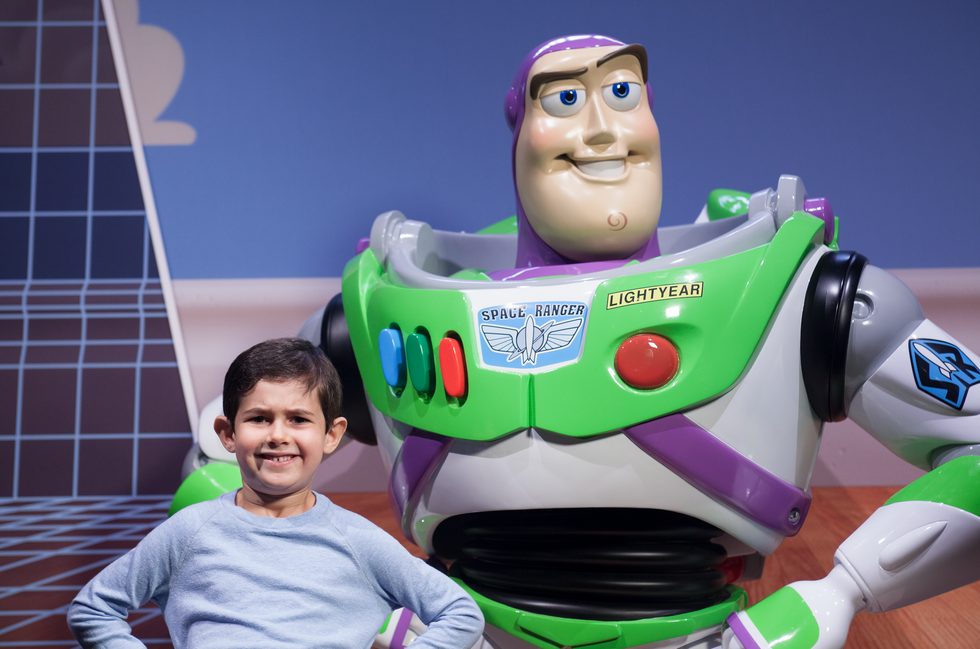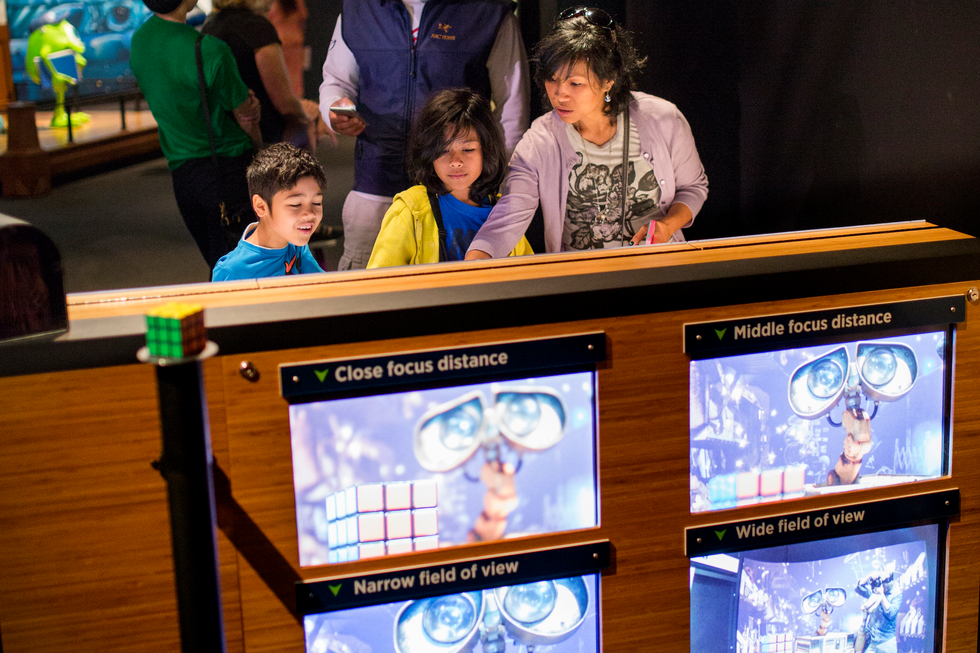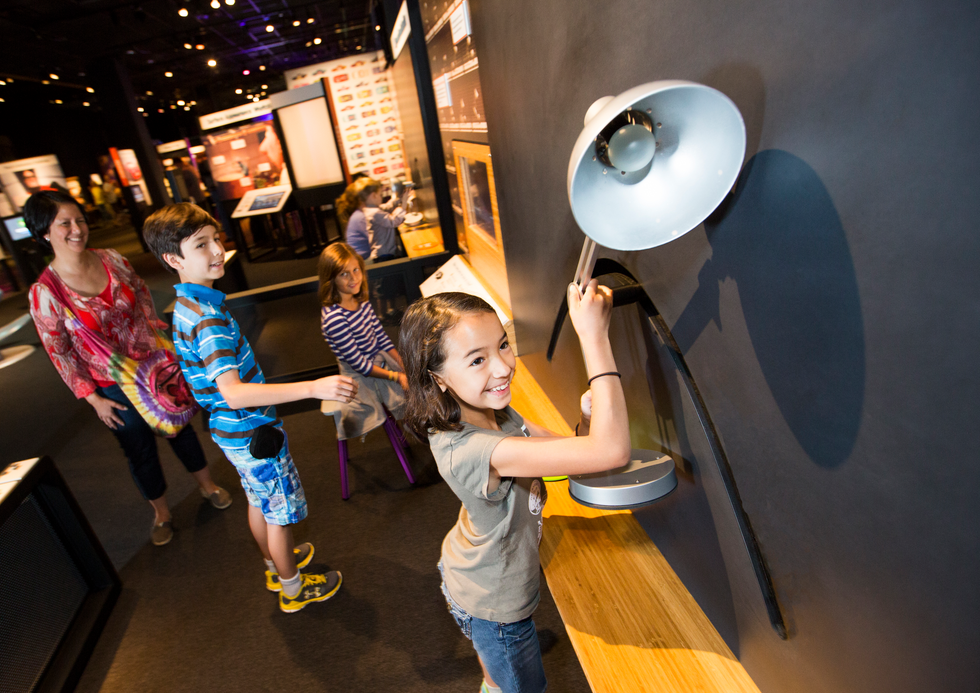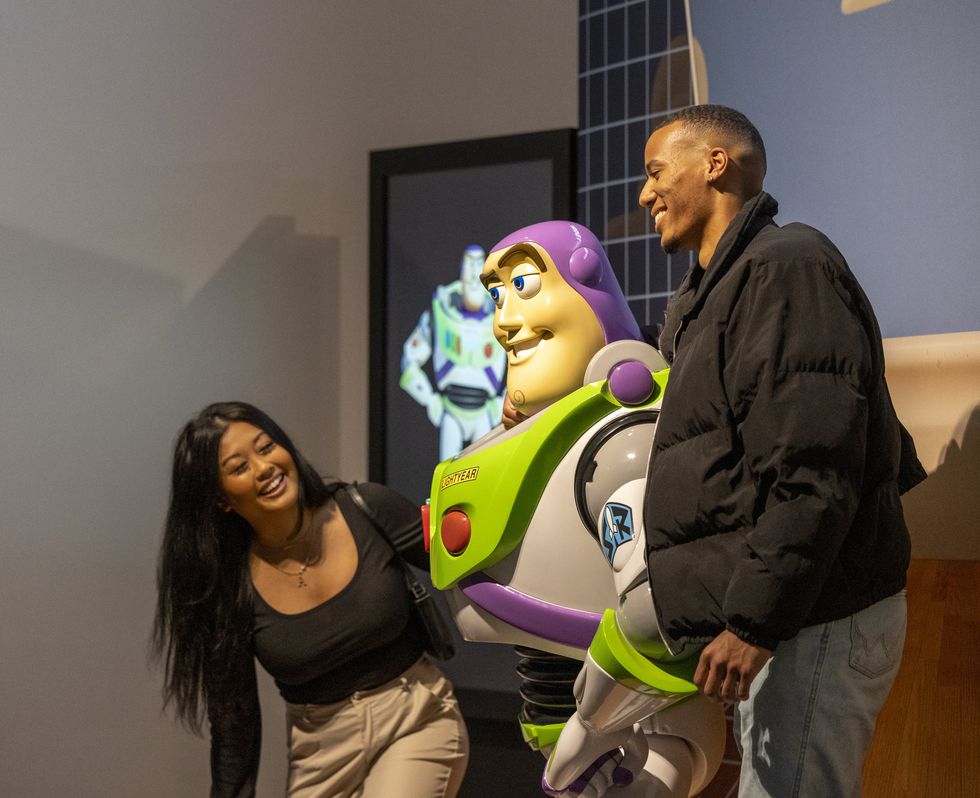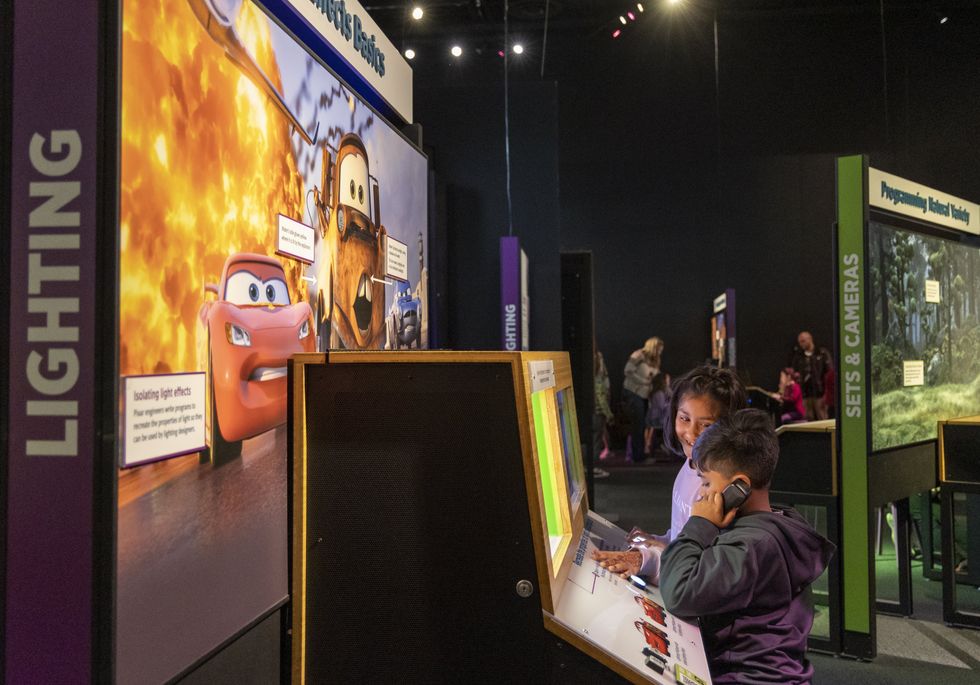To Infinity and Beyond
Time's running out to discover 'The Science Behind Pixar' at the Perot Museum
Some of your favorite Pixar characters — from Sully and Mike to Dory, Woody, and WALL*E — were created from a wealth of creativity, but did you ever stop to think about the science, math, and engineering that was also involved in bringing them to animated life?
"The Science Behind Pixar," currently making its Texas debut through Labor Day at the Perot Museum of Nature and Science, is a nearly 10,000-square-foot exhibition with dozens of hands-on activities, firsthand accounts from members of the studios’ production teams, and even life-size recreations of cherished Pixar characters. It is presented in English and digitally in Spanish.
“We tend to overlook that science is all around us and frequently in unexpected places. This exhibition offers a chance to step into the shoes of a Pixar artist to explore the technical aspects and precision that bring these treasured films and characters to the big screen,” says Dr. Linda Silver, chief executive officer of the Perot Museum. “Traveling exhibitions like ‘The Science Behind Pixar’ play a vital role in highlighting the diversity and vast opportunities for ingenuity found in STEM fields.”
You can explore more than 50 interactive elements that span the first-ever computer-animated feature film, Toy Story, which opened over 25 years ago, to the studio’s most recent, Lightyear.
Travel through eight technical steps — modeling, rigging, surfaces, sets and cameras, animation, simulation, lighting, and rendering — to gain an unparalleled view of the filmmaking process.
"’The Science Behind Pixar’ is an interactive exhibit that offers people a hands-on opportunity to understand how we make our films," says Jim Morris, president of Pixar Animation Studios. “At Pixar, we use science, technology, engineering, art, and math — along with a significant dash of creativity and fun — and this exhibit is truly a great demonstration of how all those ingredients come together in our filmmaking process."
In the sets and camera section, for example, you can see how camera placement and angles created a bug’s-eye view for A Bug’s Life.
Then try your hand at creating a digital sculpture from an artist’s sketch, or use lights to solve challenges similar to ones Pixar faced in creating underwater scenes with virtual light in Finding Nemo. Explore how the models are given a virtual skeleton that enables the animators to pose them and delve into the techniques that give surfaces color and texture.
“For more than three decades, people of all ages have been inspired by Pixar movies. This brand’s impact on our society and culture is immeasurable,” says Lucy Bannon, chief communications officer for NexPoint, which is the local presenter for the exhibition. “We are honored to help bring the exhibition to Dallas and showcase the STEM skills needed to make these iconic films.”
"The Science Behind Pixar" is only here through September 4, 2023, so be sure to purchase your tickets soon.
